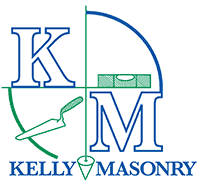Paver patios and walkways are a popular choice for homeowners looking to enhance their outdoor living spaces. However, despite their durability and aesthetic appeal, pavers are not immune to problems. One of the most common issues homeowners face is efflorescence.
What is the white stuff on your pavers? That’s efflorescence. Efflorescence is a natural phenomenon that occurs when minerals in water or moisture migrate to the surface of the pavers and leave behind a white, powdery residue. While efflorescence is not harmful to pavers, it can be unsightly and frustrating to deal with.
This blog aims to help homeowners understand the causes of efflorescence, identify the signs, and provide tips on how to prevent and remove it from their paver patios and walkways. So if you’re tired of dealing with those pesky white stains on your pavers, keep reading for valuable insights and solutions to your efflorescence problems.
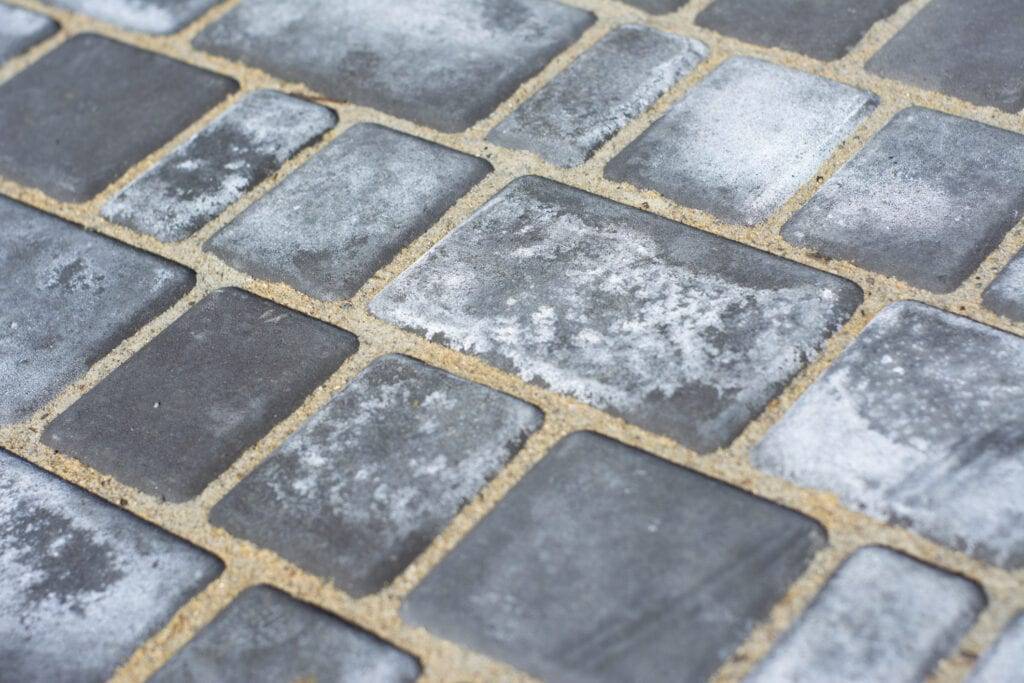
What is efflorescence and how does it affect your pavers?
Efflorescence typically occurs when water or moisture infiltrates pavers and brings dissolved minerals, such as salts and calcium, to the surface. As the water evaporates, these minerals are left behind. Although efflorescence does not pose any significant threat to pavers, it can affect their appearance and durability.
The presence of efflorescence on pavers can give them a dull, dirty, or stained appearance, which is frustrating for homeowners who want to maintain the aesthetic appeal of their outdoor spaces. Additionally, if left untreated, efflorescence can trap moisture within the pavers, leading to potential damage and deterioration.
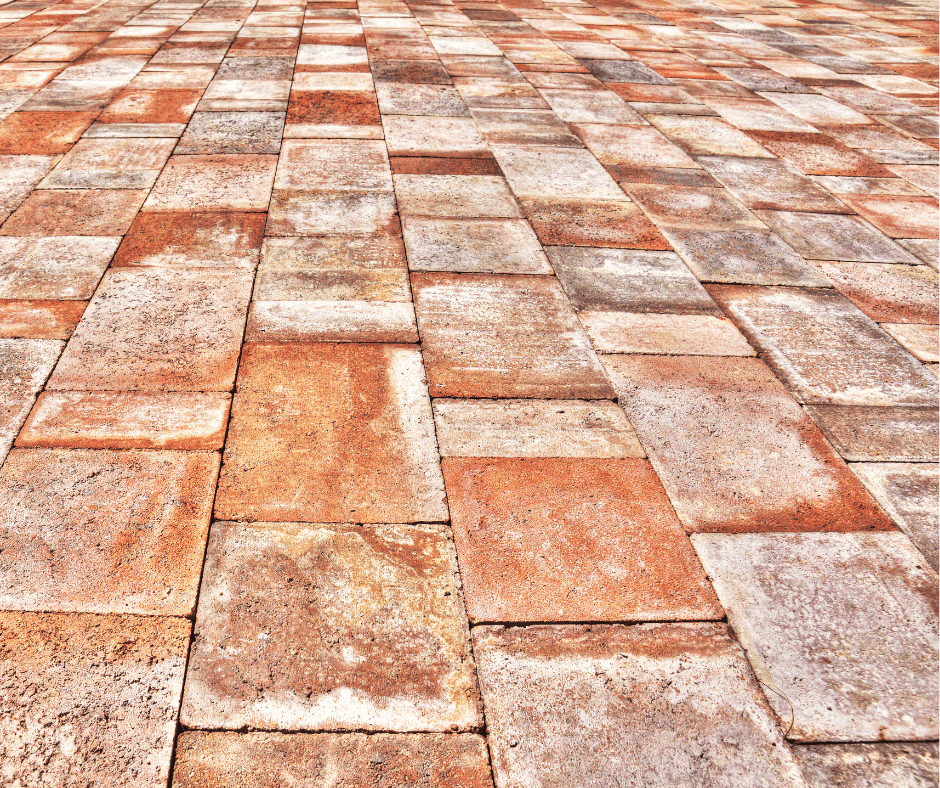
The causes of efflorescence
Several factors contribute to the development of efflorescence. One primary cause is the presence of excess moisture within the pavers themselves, often due to poor drainage or water intrusion. Additionally, the type and composition of the pavers can also influence efflorescence. Pavers made from certain materials, such as concrete or clay, are more prone to efflorescence than others.
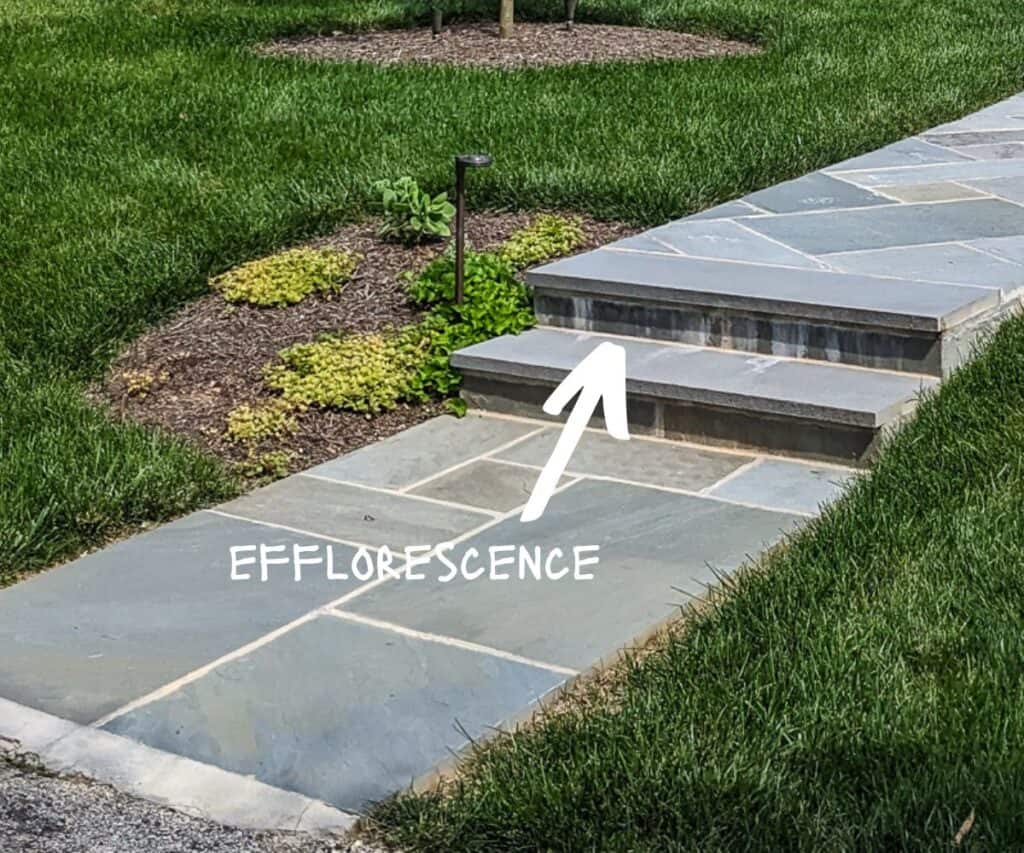
Recognizing the signs of efflorescence on your pavers
Efflorescence can manifest in various ways, and being able to recognize the signs is crucial in addressing the issue promptly. The most obvious sign is the presence of a white, powdery residue on the surface of your pavers. This residue may appear shortly after installation or could develop over time.
Another common sign is discoloration or a change in the appearance of the pavers. Efflorescence can cause the original color of your pavers to become dull or faded, detracting from the overall visual appeal.
Furthermore, efflorescence may lead to the degradation of the paver’s surface, making it more susceptible to cracking or crumbling. If you notice any signs of deterioration or structural damage, it is essential to take action immediately to prevent further problems.
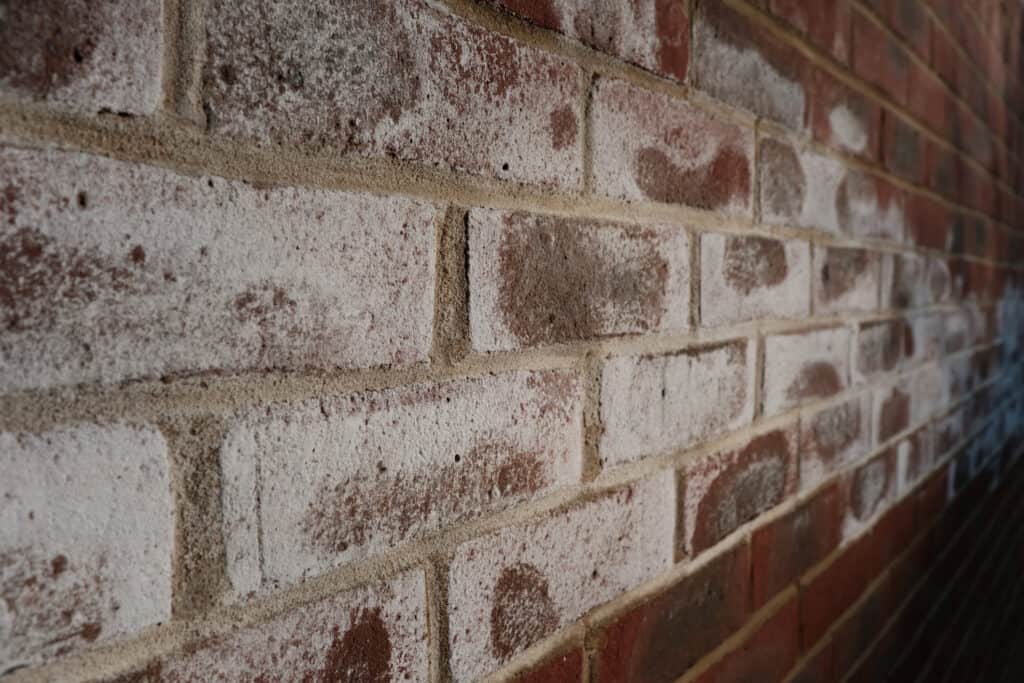
Solutions for preventing efflorescence
Now that we understand the signs and effects of efflorescence, let’s explore some effective techniques for preventing its occurrence. By incorporating these solutions into your paver installation process, you can save yourself from future headaches and maintain the aesthetic appeal of your outdoor space.
1. Proper Cleaning and Preparation: Before installing pavers, ensure that the substrate is free of any debris, dirt, or excess moisture. Additionally, make use of a high-quality efflorescence cleaner to remove any existing residue on the surface.
2. Sealants and Waterproofing Agents: Applying a sealant or waterproofing agent to your pavers can create a protective barrier that prevents water from penetrating the surface and causing efflorescence. Be sure to choose a product specifically designed for pavers.
3. Quality Materials: Opt for high-quality pavers that are less prone to efflorescence. Look for materials with low water-absorption rates and a smooth finish, as they are less likely to trap minerals and salts that cause efflorescence.
4. Proper Drainage: Ensure proper drainage around your pavers by incorporating slope and channels to direct water away from the surface. This will prevent water from pooling or seeping into the pavers, reducing the chances of efflorescence.
5. Regular Maintenance: Regularly inspect your pavers and promptly address any signs of efflorescence or deterioration. Regular cleaning and resealing can help prevent efflorescence buildup and prolong the lifespan of your pavers.
By following these preventative measures, you can minimize the risk of efflorescence and enjoy the full beauty and longevity of your paver installations.
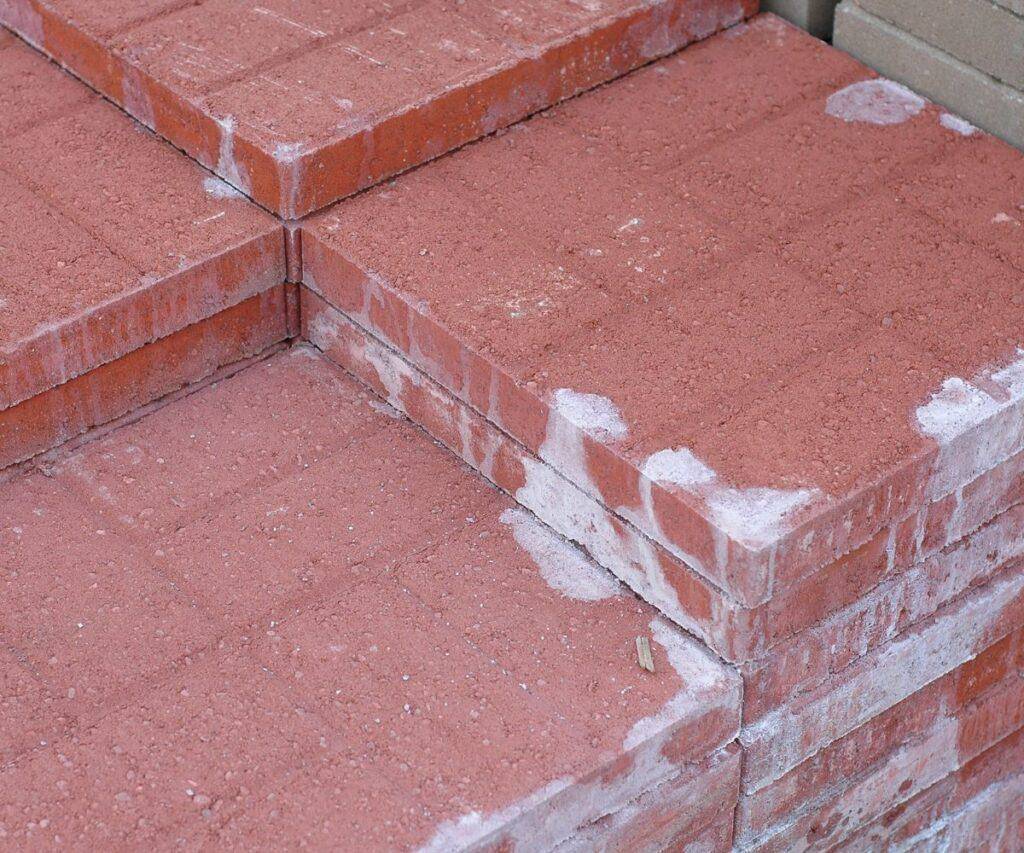
Steps to remove efflorescence from your pavers
While preventative measures are essential, efflorescence can still occur despite our best efforts. If you notice the telltale signs of efflorescence on your pavers, don’t panic. There are steps you can take to effectively remove it and restore the appearance of your outdoor space.
The first step in removing efflorescence is to thoroughly clean the affected area. Using a stiff brush or a pressure washer with a low-pressure setting, scrub the pavers to remove any loose mineral deposits. Be sure to use the appropriate cleaning solution recommended for your specific paver material.
After cleaning, it is important to neutralize any remaining efflorescence residue. This can be done by applying an efflorescence remover or a dilute acid solution to the affected area. Follow the manufacturer’s instructions carefully and wear protective clothing and gloves during this process.
Once the efflorescence is removed and the pavers are clean, it is crucial to rinse the area thoroughly with water to remove any remaining cleaning solution or acid. This will help prevent any damage to the pavers and ensure a clean and residue-free surface.
Lastly, it is advisable to reseal your pavers after removing efflorescence. Applying a quality sealer will help protect against future efflorescence and maintain the appearance of your pavers for years to come. Make sure to choose a sealer that is compatible with your paver material and follow the manufacturer’s instructions for application.
Avoiding future problems with efflorescence
Understanding efflorescence and taking proactive measures to prevent its recurrence is crucial in maintaining the beauty and longevity of your pavers. By selecting pavers with low water absorption rates and ensuring proper installation and drainage, you can minimize the chances of efflorescence forming. Regular maintenance, such as sweeping away debris and avoiding harsh cleaners, is also essential in preventing efflorescence. Additionally, having your pavers professionally sealed every few years provides an added layer of protection.
Need some extra help with your paver problems? Contact us today to discuss solutions.
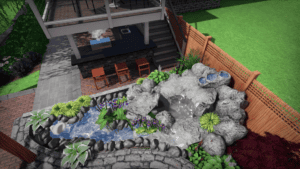
Enhance Your Outdoor Space with Stunning Water Features: 7 Creative Water Feature Ideas
Water features have the power to transform any outdoor space into a tranquil oasis. Whether you have a sprawling backyard or a cozy balcony, incorporating water features can add a touch of elegance and serenity to your outdoor living area.

When Should You Start Planning a Backyard Makeover Project?
Planning a backyard makeover project can transform your outdoor space into a beautiful and functional area for relaxation and entertainment. However, proper planning is crucial to ensure a successful and stress-free project. One of the most common questions homeowners have is when they should start planning their backyard makeover project.

The Importance of Proper Water Drainage in Patio Design
When it comes to designing a patio, one crucial aspect that often gets overlooked is water drainage. Patios are outdoor spaces that are exposed to the elements, including rainwater. Without proper drainage, water can accumulate on the surface, leading to various issues such as slippery surfaces, water damage, and even structural problems.
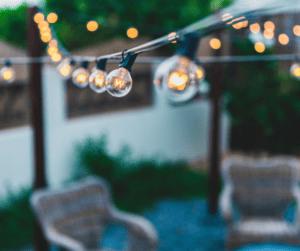
Why Adding Cafe Lights To Your Patio Is The Ultimate Affordable Upgrade
Cafe lights, also known as patio string lights or bistro lights, are decorative lighting fixtures that are commonly used to illuminate outdoor spaces such as patios, decks, and gardens. They typically consist of a string of small, evenly spaced light bulbs that are suspended between two points, creating a warm and inviting ambiance.
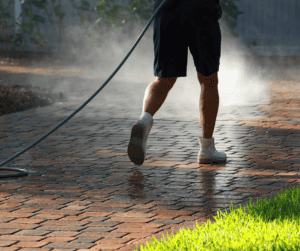
The Benefits of Permeable Pavers: Enhancing Your Outdoor Space with Sustainable Solutions
When it comes to enhancing your outdoor space, sustainability is an important consideration. One solution that is gaining popularity in Main Line, PA, and beyond is the use of permeable pavers. These innovative pavers not only add beauty to your landscape but also offer a range of environmental benefits.
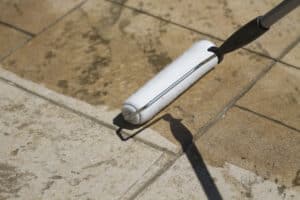
The Importance of Patio Sealing: Ensuring Durability for Your Outdoor Space
Patio sealing is a crucial step in ensuring the longevity and durability of your patio. Whether you have a concrete, stone, or paver patio, sealing it offers numerous benefits, including protection against natural elements, enhanced appearance, and increased lifespan. In this blog post, we will explore the importance of patio sealing and why it should be a priority in your outdoor maintenance routine.
